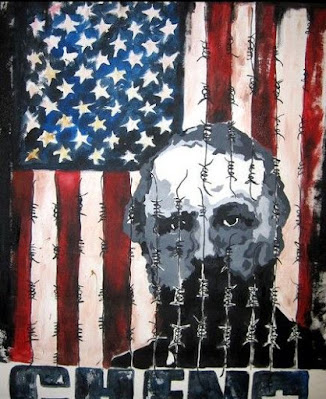It will be 154 years ago today that the ill-fated empire of Maximilian came to an end with his shooting against a wall near el Cerro de las Campanas in Santiago de Queretaro.
Maximilian was captured in May 1867, sentenced to death at a court martial, and executed, together with Generals Miguel Miramon and Tomas Mejia, on June 19, 1867.
And taking a part in Maximilian's capture and witnessing his execution was Juan N. Cortina, who had played a role in the French defeat at Puebla in 1862, a battle still celebrated during Cinco de Mayo.
France, together with Spain and the United Kingdom, had invaded Mexico in the winter of 1861 pressured the Mexican government into settling its debts with the three powers after Mexico had announced a suspension on debt repayment; the Spanish and British both withdrew the following year after negotiating agreements with the Mexican government and realizing the true intention of the French, who sought to conquer the country.
Seeking to legitimize French rule, Emperor Napoleon III invited Maximilian to establish a new pro-French Mexican monarchy. With the support of the French army and a group of Conservative Party monarchists hostile to the Liberal Party administration of President Benito Juarez. Maximilian accepted the crown of Mexico on 10 April 1864.
Mejia had at one time occupied Matamoros and had fought against the local forces of brigadier general Cortina. Cortina, demonized by Texans and their historians, had at one time in September 1859 occupied Brownsville for two days seeking "vampires in the guise of men.".
Along with Cortina, other Mexican notables were present there under Gen. Ignacio Zaragoza, among them was Porfirio Diaz, who would one day become a Mexican dictator ruling over the country for some 30 years.
Diaz would also acquiesce to the wishes of the U.S. government and remove Cortina from the U.S.-Mexico border and imprison him until he died in 1894.
But in 1867, Maximilan was a marked man.
Maximilian, at the urging of his Mexican generals, had issued his "Black Decree"' on October 3, 1865.
Its first article stated that: "All individuals forming a part of armed bands or bodies existing without legal authority, whether or not proclaiming a political pretext, whatever the number of those forming such band, or its organization, character, and denomination, shall be judged militarily by the courts martial. If found guilty, even though only of the fact of belonging to an armed band, they shall be condemned to capital punishment, and the sentence shall be executed within twenty-four hours".
It is calculated that more than 11,000 Mexicans loyal to Juarez were executed as a result of the decree, but in the end it only inflamed the Mexican resistance.
Cortina, in possession of Matamoros and – more importantly the customs house at Puerto Bagdad – was the sole support of Juarez's government in internal exile while the president was being pursued on the northern frontier by assassins in the pay of Maximilian.
Cortina wote this narrative while in prison in Tlatelolco.
"I was appointed general governor and commanding-general of said state (Tamaulipas), and presented by the city of Matamoros, through its illustrious common council, with a sword of honor. When (Nuevo Leon and Coahuila Gov. (Santiago) Vidaurri, in concert with other generals, abandoned the government of the citizen President (Benito) Juarez, I was his principal support, without which his ruin was inevitable, accompanied by grave, if not irreparable, prejudice to the national cause.

"When the general government retired as far as El Paso del Norte, I found myself compelled to serve the empire for a time, to save some forces and to preserve to the Republic the troops of our command, which I succeeded in doing, for shortly after, with that force, I combated the empire in the center of Tamaulipas, and at the siege and taking of Matamoros, of Mexico, and Queretaro, when we consolidated the independence of Mexico by the taking and shooting of Maximilian, whom I and General (Ramon) Corona captured on the 15th of May 1867."






5 comments:
Its good to know who the vampires here are. We know who you are pinches vampiros y cocos.
Space house: San Benito man commissions home tribute to SpaceX, Elon Musk
Puros cocos en el cenote y lambiscpnes y mamones no hand-outs here he's meskin
Mexico has gone downhill and continues to go down hill every since the French left.
Mexico's citizens are leaving and have been leaving in droves. Mexico is one of the richest countries in the World and still cannot make it on it's own. Mexico has always been a great place for the upper class and a shithole for the underprivileged. An affable citizenry that is kept impoverished with the lie that everything bad is due to the big boogeyman north of the river.
Me estoy quemando burros.
Cortina worship has run it's course and no longer interests anybody but a few Gringo haters.
Keep in mind that Brownsville was part of Mexico during the Cortina Era. Juan Cortina was the heir and great, great son of Salvador De la Garza, Juan Cortina was not running away from anywhere, nor anyone. He was living and protecting his land, in Brownsville, which was granted to his ancestors, great, great grandfather, (Salvador de la Garza), by the King of Spain in the early 1800's. The ones running away and stealing and killing innocents victims were the Stillmans, Kings, Miffland Kennedy and corrupt political leaders. They were the ones who were running away from where they were bore to enrich themselves with stealing land, cattle, and slaves. Salvador de la Garza's widow left a will and named Juan Cortina as an heir. Juan Cortina lived and died protecting what was his land, which is now Brownsville. Check the Texas Comproller's, and see who are the heirs. It's not the Stillmans, Miffalands, Kings.
Post a Comment